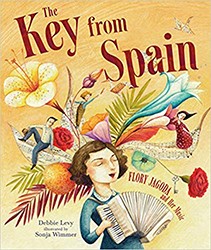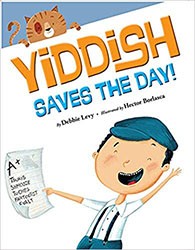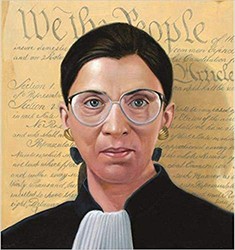From her early life growing up in Brooklyn to becoming the first Jewish woman appointed to a spot on the Supreme Court and beyond, I Dissent: Ruth Bader Ginsburg Makes Her Mark depicts the empowering life story of Supreme Court Justice Ruth Bader Ginsburg.
Even as a young girl Ruth challenged the notions of what she was “supposed” to do. “Boys were expected to grow up, go out in the world, and do big things. Girls? Girls were expected to find husbands.” With the encouragement of her loving parents, Ruth believed that despite the limitations for girls, she should do anything she set her mind to, often inspired by her favorite stories featuring strong girls and women like Amelia Earhart and Nancy Drew.
And Ruth had no problem disagreeing — she defied teachers who forced her to write with her right hand when she was a lefty, she sang louder despite the music teacher asking her not to, and she disliked the fact that she had to take sewing and cooking classes while boys got to take shop class. On a car trip, Ruth saw racist signs, including one that read “No Dogs or Jews Allowed.” This affected her greatly and set her on a lifelong path to fight inequality.
Ruth went on to college where she met her husband, Marty. They both decided to become lawyers. As one of only nine women (out of 500) students, Ruth sailed through law school, tying for first place in her class. Despite this, nobody wanted to hire her. She was Jewish, a woman, and by this point, a mother. “Three strikes,” Levy writes. “But Ruth was not out. She resisted and persisted.” Eventually, Ruth became a professor and a renowned lawyer and in 1993, a judge on the Supreme Court. She refused to give up her convictions, particularly those which fought for the rights of women, immigrants and African-Americans.
Although this book tells the fascinating story of Ruth Bader Ginsberg, it also provides a historical lesson which depicts the ever-changing face of societal norms and gender roles which Ruth challenged personally and professionally. For example, Levy describes how people found it strange that Marty cooked the family dinners while Ruth argued in the Supreme Court. Also included are actual quotes which illuminate the sexism in American History which Ruth ardently fought against.
“Disagreeing does not make a person disagreeable. In fact, it can change the world!” Levy encourages young readers. Ruth Bader Ginsburg’s story is one of hope and conviction, and I Dissent: Ruth Bader Ginsburg Makes Her Mark celebrates her many contributions and offers young readers a window into the fight for justice in America.
The text features bold, typographical illustrations which highlight Ruth Bader Ginsburg’s powerful messages. The book’s afterword features a more expanded depiction of Ruth Bader Ginsburg’s life and career including pictures, notes on some of her court cases and a bibliography. Highly recommended for ages 4 – 8.




